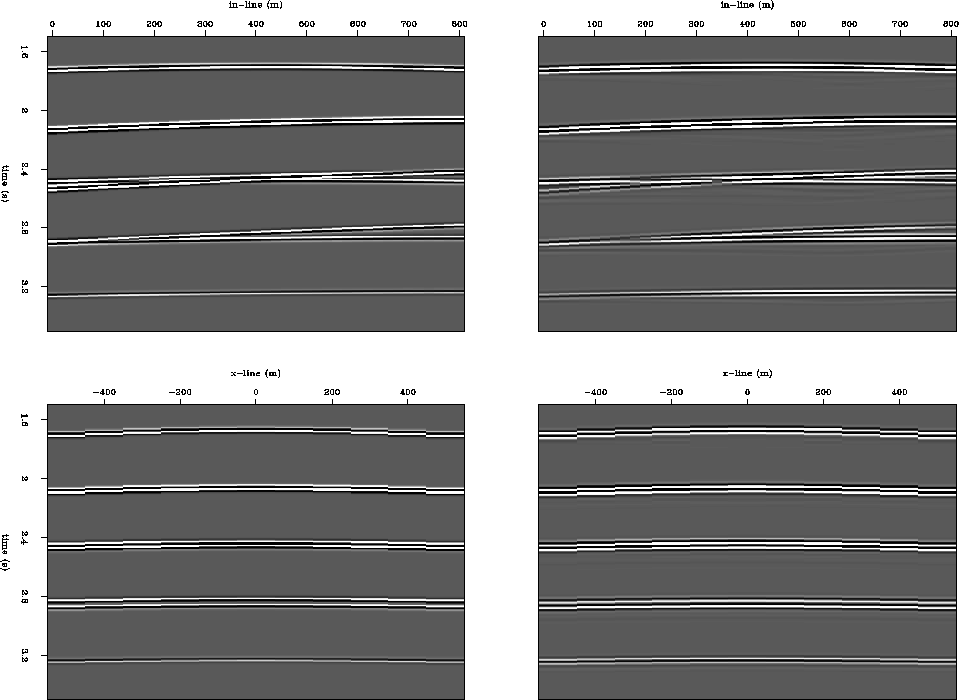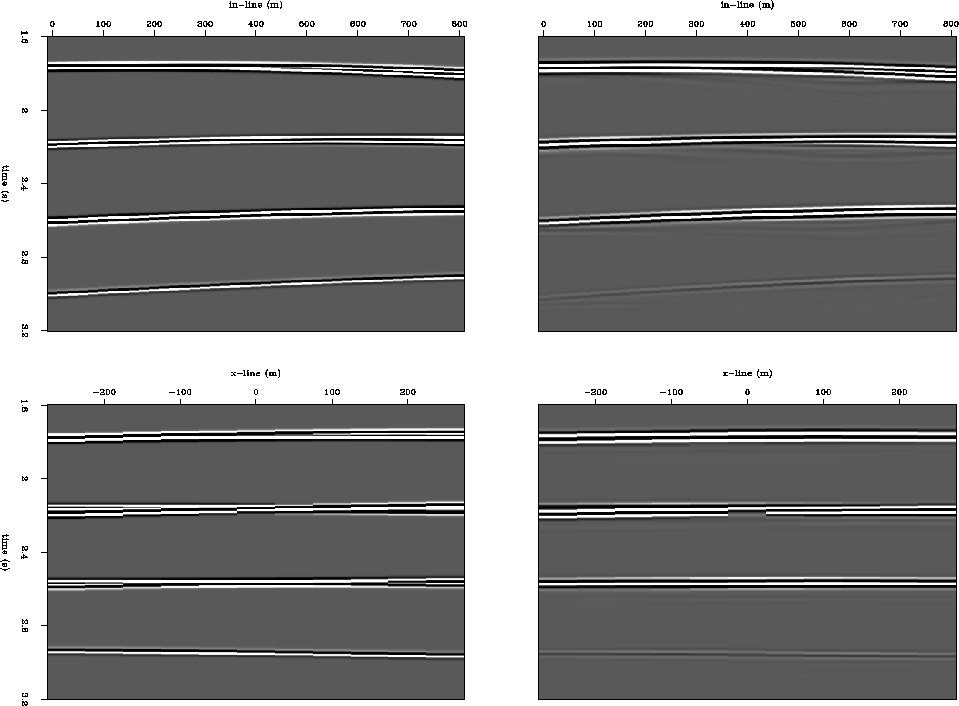| Model | In-line dip ( |
X-line dip ( |
Layer velocity (km/s) |
| A | (0.0,5.0,10.0) | (0.0, 0.0, 0.0) | (1.5, 2.0, 2.5) |
| B | (0.0,5.0,10.0) | (0.0, -5.0, 5.0) | (1.5, 2.0, 2.5) |
| Model | In-line dip ( |
X-line dip ( |
Layer velocity (km/s) |
| A | (0.0,5.0,10.0) | (0.0, 0.0, 0.0) | (1.5, 2.0, 2.5) |
| B | (0.0,5.0,10.0) | (0.0, -5.0, 5.0) | (1.5, 2.0, 2.5) |
| Model | |||
| A | 20 | 20 | 100 |
| B | 20 | 20 | 50 |
Model A is designed so that the shotline and streamers are deployed along the in-line dip direction. Therefore, there is no approximation error in our approach. With 11 streamers covering from -500m to +500m and a 100m streamer interval in the cross-line direction, this is a wide azimuth survey.
For a given shot location, Figure 8 shows the ideal multiple gather and the predicted one. Each 3-D MCG cube in this example is first stacked along the in-line direction into a 2-D PSMCG containing at most 11 traces sampled at intervals of 100m. The 2-D PSMCG is then interpolated in the cross-line direction to be sampled at 25m intervals. The interpolated PSMCG is further stacked into a trace.
 |
Model B is a relatively narrow azimuth survey that still contains 11 streamers covering from -250m to +250m at 50m streamer intervals in the cross-line direction. The bottom two reflectors in the model have the opposite cross-line angles, which inevitably introduce approximation error into the estimation. However, as shown in Figure 9, as long as the cross-line dips have no dominant direction, the error can possibly be compensated for in the subtraction step.
 |